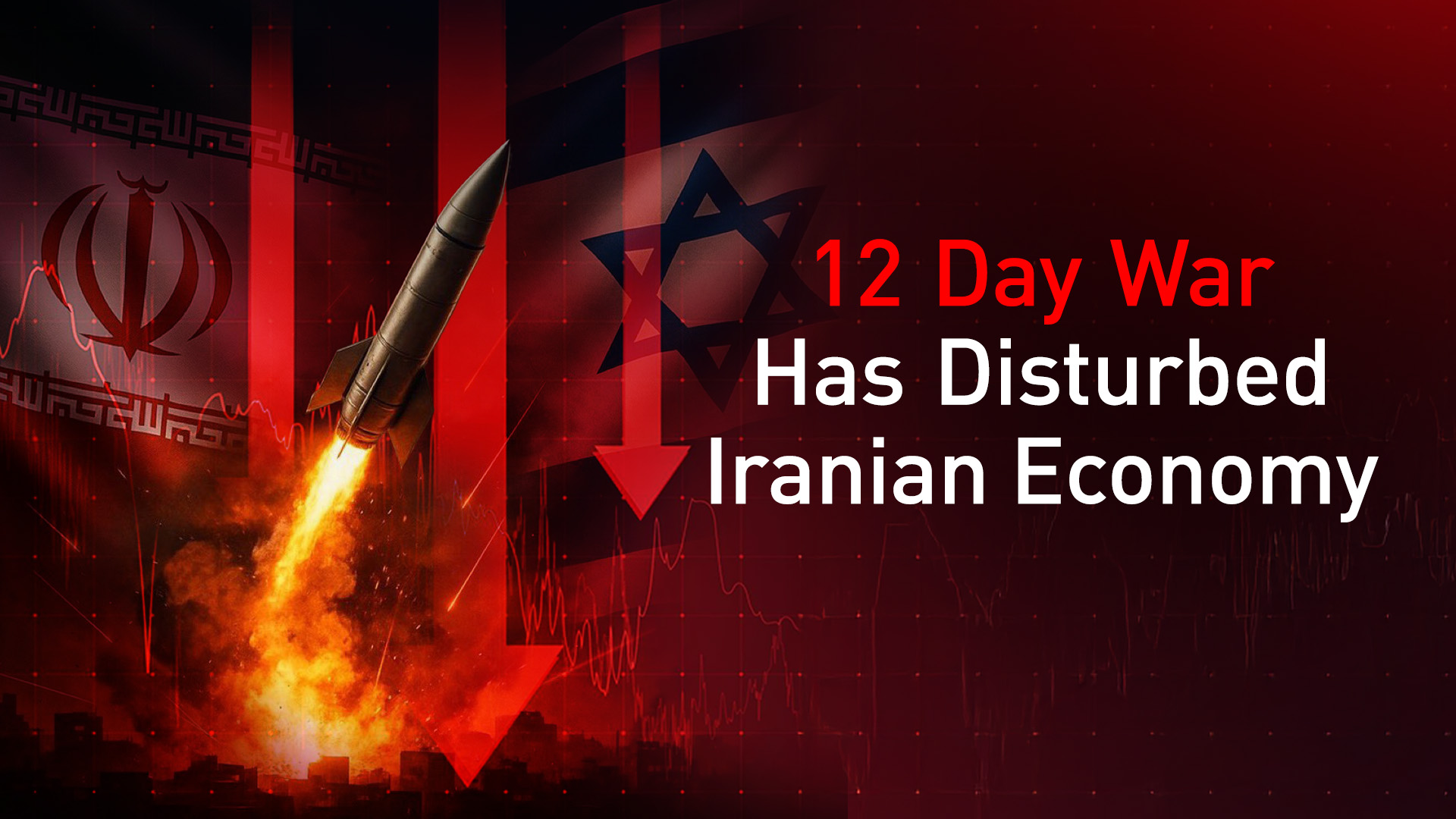War's Aftermath Plunges Iranian Economy into Severe Crisis
Iran’s economy is reeling after a 12-day war with Israel, facing currency collapse, recession, and public distrust. A fragile ceasefire failed to restore stability as inflation, job losses, and investor panic deepen, triggering what experts call a full-scale economic crisis.

ERBIL (Kurdistan24) – A 12-day war with Israel, followed by what economic experts describe as an unstable and untrustworthy ceasefire, has pushed Iran's economy into a severe phase of crisis, triggering a currency collapse, widespread market recession, and deepening instability across all sectors.
According to reports from economic experts, the conflict has exacerbated Iran's existing economic challenges, with its effects now visible in every part of the country's economy. The aftermath of the war has left Iran facing instability, a major recession, and profound new challenges.
The most immediate impact was felt in the currency market, which has faced a severe downturn since the war began. The value of the Iranian toman plummeted significantly, at one point reaching 95,000 tomans to one US dollar. While the currency recovered slightly after the ceasefire was announced, it has not returned to its pre-war level.
In response, the Central Bank of Iran announced it would inject 65 trillion tomans into the market, but the move failed to restore the trust of investors and merchants. Fearing a sudden collapse of the toman, investors and citizens have halted most financial transactions, leading to a general market slowdown.
To prevent capital flight, the Iranian government has also deliberately disrupted the gold and cryptocurrency markets. According to the report, with investors attempting to move gold out of the country and increasingly using cryptocurrencies, the state’s intervention has caused confusion and price instability, which in turn directly harms citizens.
The real estate market has also faced a major recession. Amid the fragile ceasefire, investors have reportedly abandoned the real estate market and are trying to withdraw their funds. The resulting decrease in buyers and increase in sellers has led to an 8% drop in real estate prices in Tehran, with similar declines visible in other provinces.
The conflict has worsened Iran's pre-existing problems with unemployment and inflation.
Reports from within the country indicate that in just one month, the price of food items has increased by more than 10%. Many small shopkeepers and street vendors have been forced to close due to a lack of customers, and laborers, particularly in bakeries, quit their jobs during the war due to instability and fear of bombardment.
A significant decline in oil exports has also negatively impacted the economy, as foreign shipping companies have changed their routes away from Iranian ports, increasing the price of imported goods and drastically raising insurance premiums on Iran.
The economic turmoil has had a profound effect on daily life and job security. The anxiety and mistrust toward the ceasefire have caused citizens to spend money only on basic necessities, leading to a dramatic decrease in spending on travel, dining, clothing, and other secondary items. Residents of Tehran, especially those in the private import-export sector, live in a state of daily anxiety, expecting to be fired at any moment.
The situation is also dire for journalists, with reports of more than 150 reporters and correspondents being dismissed from major Iranian media outlets.
Adding to the economic burden is the direct damage from the war.
A large portion of Iran's infrastructure sustained serious damage, and Israeli cyberattacks on the 'Sepah' and 'Pasargad' banks not only created turmoil in the financial system but resulted in the theft of nearly $100 million of customer deposits. The general costs of the war, including missile launches and air defense, combined with an estimated $400 million loss from the state-mandated internet shutdown, have placed a heavy burden on Iran's economy.
The detailed account of Iran's economic fallout reveals that the primary consequence of the 12-day war is a severe and cascading internal crisis. The conflict has acted as a powerful shock to an already fragile economic system, accelerating its decline and exposing a catastrophic loss of public and investor confidence.
The core of the crisis appears to be psychological as much as it is financial. The description of an "unstable and untrustworthy ceasefire" is key; it signifies that the end of active conflict has not brought a return to normalcy. Instead, it has created a paralyzing environment of uncertainty where citizens and investors alike are frozen by fear of a renewed war or a complete economic collapse.
This fear is the engine driving the recession, from the run on the dollar to the stagnation in the real estate and consumer goods markets.
The government's response, as described in the report, highlights a critical dilemma. Actions like disrupting the gold and crypto markets or shutting down the internet are attempts to control the damage and capital flight. However, these heavy-handed measures have also backfired by creating more instability, directly harming citizens, and further eroding trust in state institutions. It paints a picture of a government trapped, using tools that exacerbate the very panic it seeks to quell.
Ultimately, the report illustrates how a short, external military conflict can rapidly metastasize into a long-term domestic crisis. The damage is not just in bombed infrastructure or the cost of missiles, but in the shattered confidence of a nation, the lost jobs of its people, and a deep-seated anxiety that has brought its economy to a standstill.
